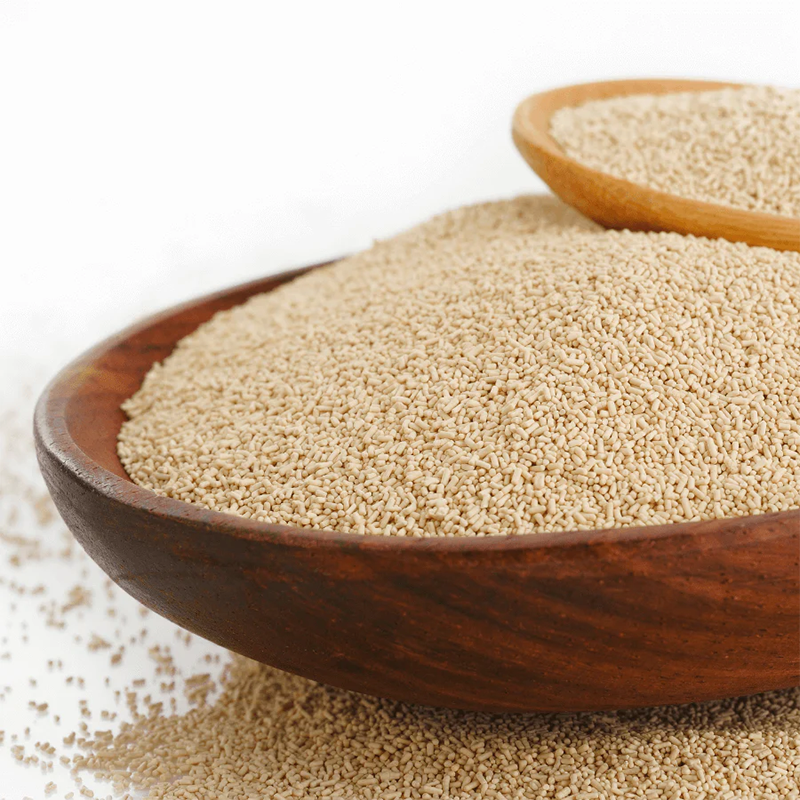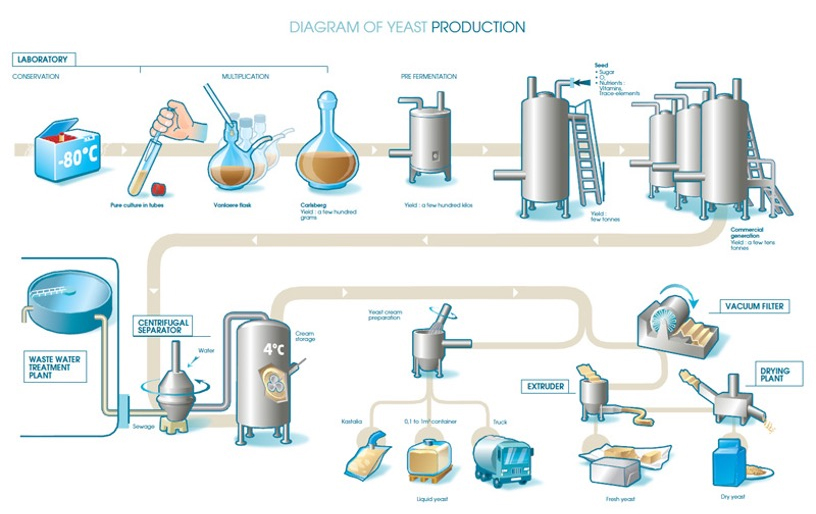The Complete Guide to Instant Dry Yeast
What Is Instant Dry Yeast?
Instant dry yeast, also called rapid-rise or quick-rise yeast, is a type of dried yeast. Bakers use it in baking to help bread and other doughs rise. Unlike fresh yeast, which spoils and requires cold storage, instant yeast lasts a long time.
You can store it at room temperature until you open it. It has fine granules that dissolve quickly. It does not need proofing (activation in water) before use. This makes it a convenient choice for both amateur and professional bakers.

How Is Instant Yeast Made?
The production of instant dry yeast involves several steps:
Yeast cultivators grow yeast (Saccharomyces cerevisiae) in big fermentation tanks. They keep it under controlled conditions and feed it nutrients like molasses and nitrogen.
Harvesting: Once the yeast has multiplied, it is separated from the fermentation medium through centrifugation.
Drying: A special process dries the yeast. This often involves spray-drying or fluidized bed drying at low temperatures. This helps keep its enzymatic activity.
Packaging: The dried yeast is vacuum-sealed to prevent moisture absorption, which could activate it prematurely.
The result produces a fine, powdery yeast that you can mix directly into dry ingredients without prior hydration.

Instant Yeast vs. Active Dry Yeast: Key Differences
While both instant yeast and active dry yeast are dehydrated forms of Saccharomyces cerevisiae, they differ in several ways:
Feature
|
Instant Yeast
|
Active Dry Yeast
|
Granule Size
|
Finer, dissolves quickly
|
Larger, requires hydration
|
Proofing Needed?
|
No
|
Yes (must activate in water)
|
Rising Time
|
Faster (30-50% quicker)
|
Slower
|
Storage
|
Longer shelf life
|
Shorter shelf life
|
Usage
|
Directly mixed with flour
|
Must be dissolved first
|
Because of these differences, substituting one for the other requires adjustments. If replacing active dry yeast with instant yeast, you can reduce the quantity by about 25%. Conversely, if using active dry yeast in place of instant yeast, you may need to increase the rising time.
Do You Need to Activate Instant Yeast?
Unlike active dry yeast, instant yeast does not require activation. You can mix it directly into the dry ingredients. Some bakers like to dissolve it in warm water (about 105°F/40°C). This helps ensure the yeast is alive and active, especially if it is close to its expiration date.
To test yeast freshness:
Dissolve 1 tsp of sugar in ¼ cup warm water.
Add 1 tsp of instant yeast and wait 5-10 minutes.
If the mixture becomes frothy, the yeast is active.
How to Make Bread Using Instant Yeast
Basic Instant Yeast Bread Recipe
Ingredients:
500g (4 cups) bread flour
5g (1 tsp) instant dry yeast
10g (2 tsp) salt
300ml (1¼ cups) warm water (~105°F/40°C)
1 tbsp sugar or honey (optional, for flavor)
2 tbsp olive oil or butter (optional, for softness)
Instructions:
Mix Dry Ingredients: In a large bowl, combine flour, instant yeast, salt, and sugar (if using).
Add Liquids: Gradually pour in warm water and oil, mixing until a shaggy dough forms.
Knead: Place the dough on a floured countertop and knead it for 8-10 minutes until it becomes smooth and elastic.
First Rise: Place the dough in a greased bowl, cover with a damp cloth, and let rise in a warm place for 1-1.5 hours or until doubled in size.
Shape: Punch down the dough, shape it into a loaf or rolls, and place it in a greased baking pan.
Second Rise: Let it rise again for 30-45 minutes.
Bake: Preheat the oven to 375°F (190°C) and bake for 25-30 minutes until golden brown.
Cool: Allow the bread to cool on a wire rack prior to slicing.

Variations Using Instant Yeast
Whole Wheat Bread: Replace half the flour with whole wheat flour.
Garlic Herb Bread: Add 1 tsp dried herbs and minced garlic to the dough.
Sweet Bread: Increase sugar to ¼ cup and add raisins or cinnamon(It is recommended to use our high sugar yeast).
Instant dry yeast is a versatile and time-saving ingredient for bread-making. Its fine texture and rapid activation make it ideal for quick recipes, while its long shelf life ensures convenience.
Understanding the differences between instant yeast and active dry yeast allows bakers to adapt recipes effectively. Instant yeast gives you great results with little effort. You can use it for rustic loaves, soft dinner rolls, or flavored artisan bread. Happy baking!



